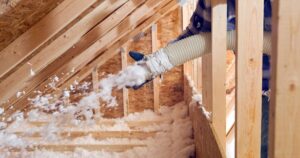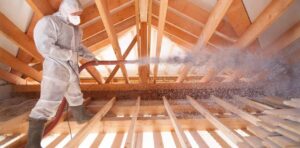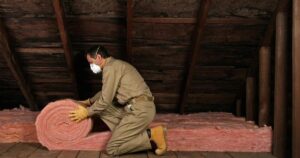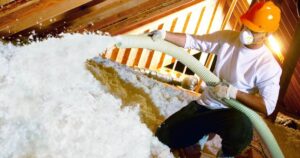When it comes to home maintenance and energy efficiency, the often-overlooked hero is attic insulation. Attic insulation plays a crucial role in regulating the temperature in your home and ensuring that you stay comfortable all year round. But does attic insulation go bad? How long does it last?
In this comprehensive guide, we will delve into the world of attic insulation, explore its longevity, and provide you with valuable insights on maintaining a well-insulated home.
Don’t wait until you notice a significant increase in your energy bills or temperature discomfort; take proactive steps to protect your attic insulation and maintain a comfortable living environment.
Understanding Attic Insulation
Before we dive into the topic of whether attic insulation can go bad, let’s start with the basics. Attic insulation is a material that is installed in the attic of a house to prevent the transfer of heat. It acts as a barrier, keeping the indoor temperature stable and reducing the load on your heating and cooling systems. Common types of attic insulation include fiberglass, cellulose, and spray foam.
The Lifespan of Attic Insulation
Attic insulation, like any other component of your home, has a finite lifespan. The longevity of your attic insulation depends on several factors:
1. Material Type
The type of insulation you have in your attic plays a significant role in determining its lifespan. Fiberglass insulation, for example, can last for up to 25-30 years, while cellulose insulation may have a slightly shorter lifespan of 20-25 years.
2. Installation Quality
The quality of the installation also affects the lifespan of your attic insulation. Properly installed insulation is likely to last longer and perform more efficiently.
3. Environmental Factors
Environmental conditions, such as extreme temperature fluctuations, moisture, and pests, can impact the lifespan of your attic insulation. Insulation in areas with harsher climates may deteriorate more quickly.
4. Maintenance
Regular maintenance and inspection of your attic insulation can help prolong its life. Detecting issues early on and addressing them can prevent more extensive damage.
Signs Your Attic Insulation Needs Attention
To determine if your attic insulation may be going bad or needs maintenance, keep an eye out for the following signs:
1. Increased Energy Bills: If your heating and cooling costs have significantly increased, it may be a sign that your insulation is no longer performing as it should.
2. Temperature Fluctuations: Inconsistent indoor temperatures can be an indication of insulation issues. Your home may feel drafty or uncomfortably warm.
3. Pest Infestations: Pests, such as rodents or insects, may damage your insulation, reducing its effectiveness.
4. Visible Damage: Inspect your attic for visible damage to the insulation, such as moisture stains, mold, or physical wear and tear.
Maintaining Your Attic Insulation
To ensure your attic insulation lasts as long as possible, follow these maintenance tips:
Regular Inspections: Inspect your attic insulation annually for any signs of damage or wear. Early detection can prevent costly repairs.
Sealing Gaps: Seal any gaps, cracks, or openings in your attic to prevent air leaks. Proper sealing can enhance the insulation’s performance.
Pest Control: Implement pest control measures to deter rodents and insects from nesting in your attic.
Upkeep of Roof: A well-maintained roof can prevent moisture from seeping into the insulation. Regularly check and repair your roof if needed.
Conclusion
Attic insulation does have a lifespan, and it can deteriorate over time. However, by choosing the right type of insulation, ensuring quality installation, and performing regular maintenance, you can extend the life of your attic insulation and enjoy the benefits of an energy-efficient home for years to come.










